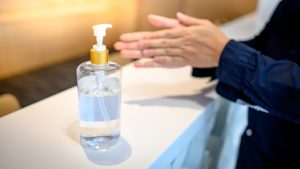People have been using hand sanitizers for many years. However, their use has increased tremendously during the past few months due to the current pandemic.
There are a few different accounts on how hand sanitizers were developed and entered into general use. One of these accounts traces the origins to a married couple, the Lippmans, in Akron, Ohio back in the 1940’s. They created a waterless hand cleaner used by workers in rubber plant factories. In 1988 the Lippmans invented Purell, which is made of 70% ethyl alcohol as the main ingredient and also contains propylene glycol. It wasn’t widely used by consumers until 1997 and the results became the world’s leading hand sanitizer.
In 2002, the Centers for Disease Control and Prevention (CDC) revised its guidelines to allow alcohol based hand sanitizers as a way to clean hands and eliminate germs in the absence of soap and water, In 2009 the World Health Organization also recommended them as an alternative to soap and water.
Hand sanitizers typically contain anywhere from 60 – 95 percent isopropyl or ethyl alcohol mixed with water and gels such as glycerin.
The Food and Drug Administration (FDA) allows a product to be called a hand sanitizer if it contains ethyl alcohol, isopropyl alcohol or bensalkonium as the active ingredient. Alcohol breaks down disease causing bacteria and viruses. The higher the concentration of alcohol, the more effective the hand sanitizer will be.
Hand sanitizers are effective against many bacteria and viruses, but not all of them. They generally don’t work well against norovirus, Clostridium difficile or Cryptosporium.
Hand sanitizers don’t typically expire but the alcohol can evaporate. They are considered generally safe for use on the skin, however using too much can cause skin irritation. Susan Weiser, the Director of Infection Control at Flushing Hospital Medical Center tells us that hand washing with soap and water is recommended after every four or five uses of the hand sanitizers to reduce the risk of irritating your skin.
All content of this newsletter is intended for general information purposes only and is not intended or implied to be a substitute for professional medical advice, diagnosis or treatment. Please consult a medical professional before adopting any of the suggestions on this page. You must never disregard professional medical advice or delay seeking medical treatment based upon any content of this newsletter. PROMPTLY CONSULT YOUR PHYSICIAN OR CALL 911 IF YOU BELIEVE YOU HAVE A MEDICAL EMERGENCY.

